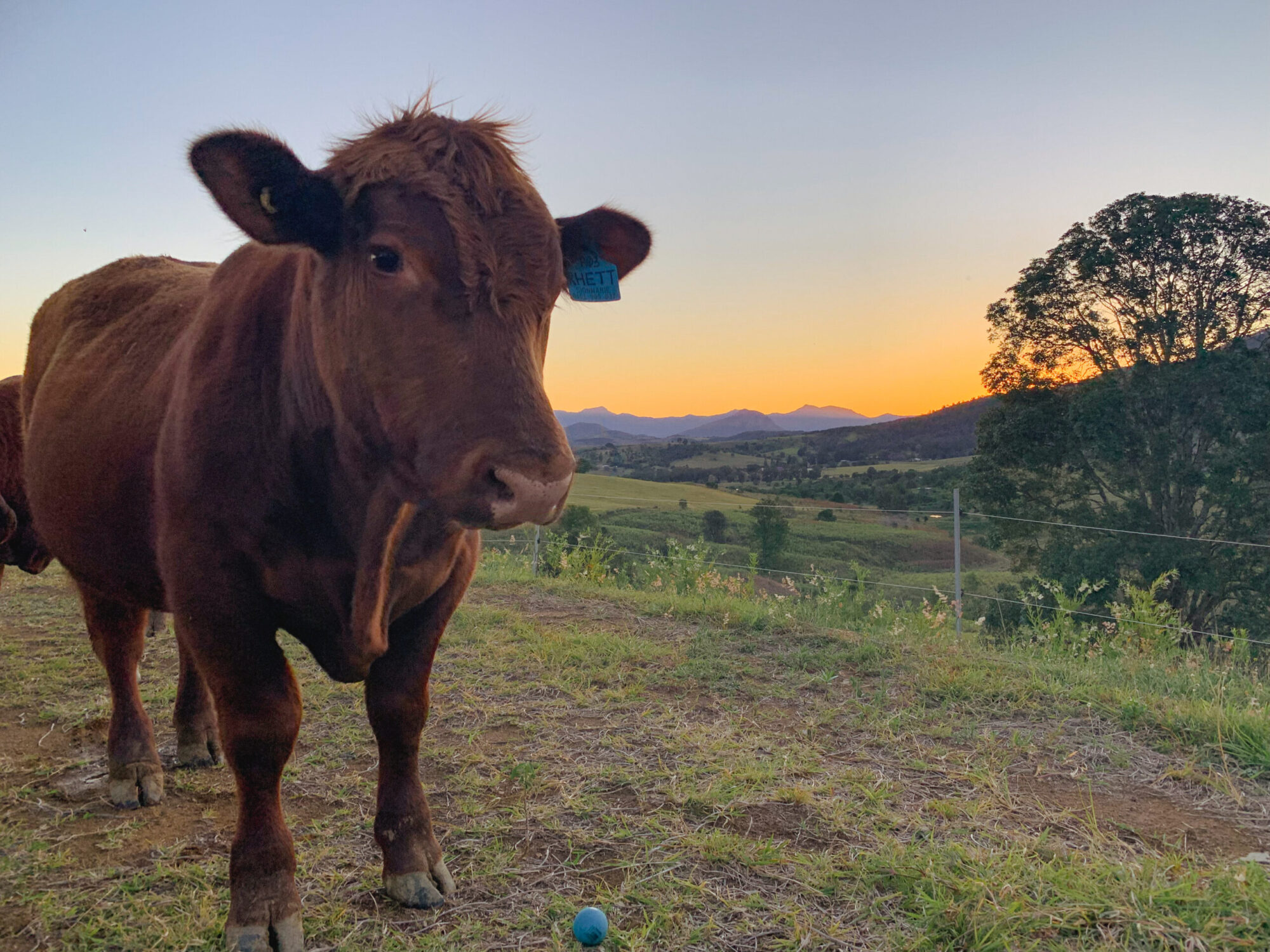X – Plan A – Refurbish the old bore
X – Plan B – Drill a new bore.
? – Plan C – Fix the Dam Wall.
When looking back at our ability to secure water for the farm we’ve been about as successful as Phi Tufnell’s fielding. We tried Plan A (refurbish the old bore) and Plan B (drill a new bore). Now it was time for Plan C – Call back our trusty earthmover man (Bevan) and “Fix the Dam Wall”.
In 2017 Cyclone Debbie had taken out a good proportion of the farm’s main dam wall and if we are ever to retain enough water to sustain our herd then it would need to be fixed and designed so it wouldn’t happen again. Now the challenge with our situation is that we effectively have 80 acres of catchment pouring into the dam. Perfect for your average run of the mill summer rain but devastating in major rain events.
The plan was to create an overflow and spillway as wide, long, and flat as possible to slow the water as it escaped the dam. It also needed to be fortified so it would resist erosion. Looking at our situation Bevan calculated that a 15m by 4m overflow would do the trick. 108 tonne of rock later with some anchor stones that would not look out of place at Stonehenge, we were in business.
 The silver lining from this drought was that the dam was bone dry and could be de-silted quiet easily. In fact, we would claim back another 2m of depth through the process. After another day of scraping, we had what resembled a pretty decent hole in the ground.
The silver lining from this drought was that the dam was bone dry and could be de-silted quiet easily. In fact, we would claim back another 2m of depth through the process. After another day of scraping, we had what resembled a pretty decent hole in the ground.
In the picture on the left, our Polaris looks more like a moon buggy from an Apollo mission than a farm vehicle.
With our job done it was down to Mother Nature to do her bit. Now the summer of 2019/20 wasn’t an exceptionally “wet” season but 200mm in the first half of February was enough to raise the water level to the brim of the overflow. We were amazed and excited to see that a good but not great summer could fill our dam.
 Based on my O-Level maths I calculated that we had over two megalitres to play with. All of a sudden the world was a better place……..
Based on my O-Level maths I calculated that we had over two megalitres to play with. All of a sudden the world was a better place……..
……….. except for the small problem that the level of the water is dropping way quicker than expected – way more.
I’ve done some investigation and it comes down to the following possibilities:
- I’ve underestimated the effect of the Australian climate on water evaporation.
- There’s a leak
- The land is so dry it is sucking the moisture back into the water table
- The material on the floor and walls of the dam needs to settle
It has been quite disheartening to think that after all our efforts to sure up the water supply we still don’t have an answer. I must admit this setback has taken the wind out of me for the next while but I’m sure I’ll get back on the horse soon. After all, there is nothing that thought, effort, time, and (unfortunately) money can’t fix.




